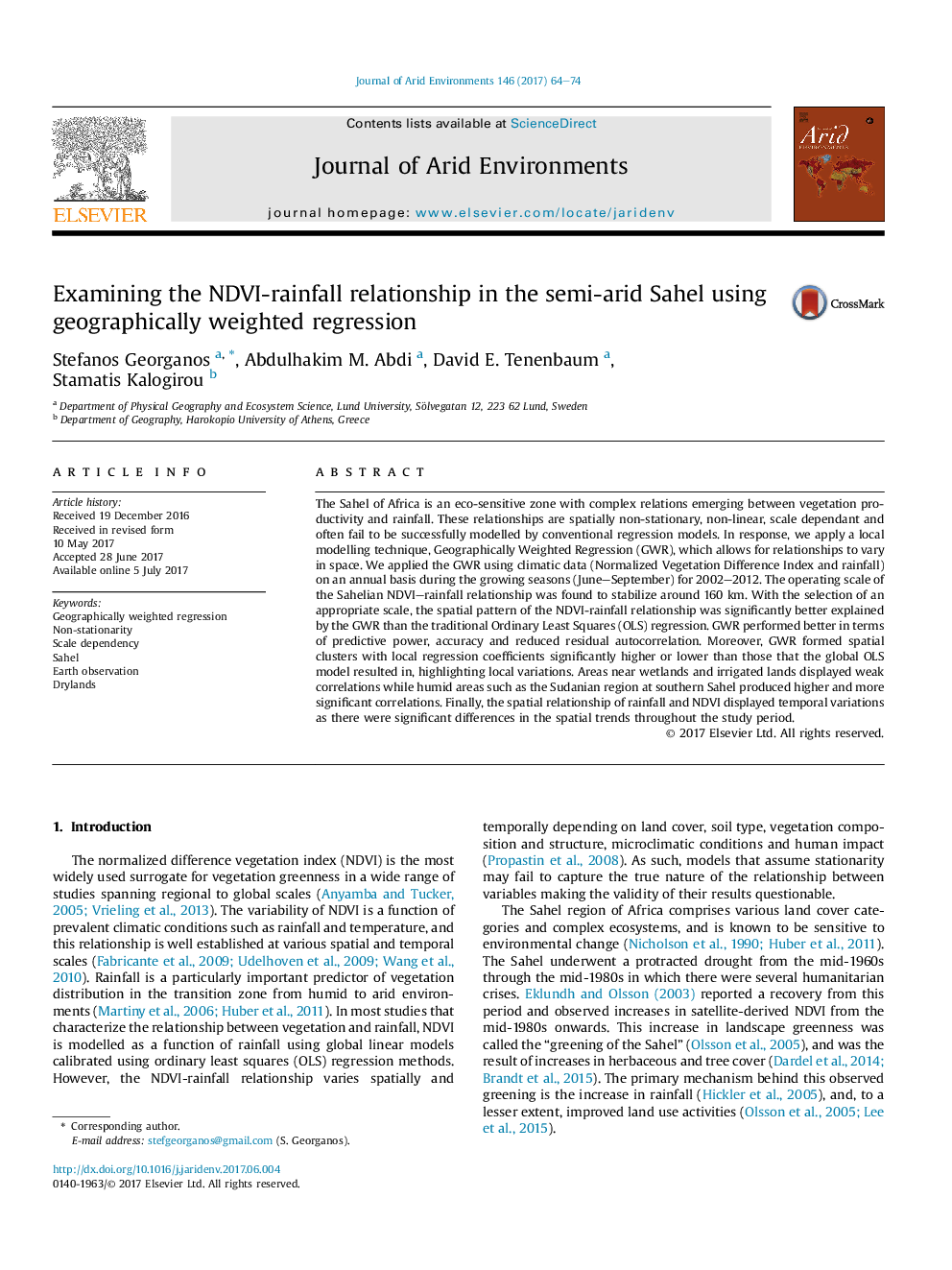| کد مقاله | کد نشریه | سال انتشار | مقاله انگلیسی | نسخه تمام متن |
|---|---|---|---|---|
| 5744288 | 1618213 | 2017 | 11 صفحه PDF | دانلود رایگان |

- The relationship between NDVI and rainfall in Sahel significantly varied through space.
- NDVI patterns over the Sudanian region exhibited the highest sensitivity to rainfall.
- GWR models suggest that rainfall is a more potent determinant of NDVI than an OLS model would.
- Changes in the spatial relations through time were highest in the Kordofan region and Western Sahel.
The Sahel of Africa is an eco-sensitive zone with complex relations emerging between vegetation productivity and rainfall. These relationships are spatially non-stationary, non-linear, scale dependant and often fail to be successfully modelled by conventional regression models. In response, we apply a local modelling technique, Geographically Weighted Regression (GWR), which allows for relationships to vary in space. We applied the GWR using climatic data (Normalized Vegetation Difference Index and rainfall) on an annual basis during the growing seasons (June-September) for 2002-2012. The operating scale of the Sahelian NDVI-rainfall relationship was found to stabilize around 160Â km. With the selection of an appropriate scale, the spatial pattern of the NDVI-rainfall relationship was significantly better explained by the GWR than the traditional Ordinary Least Squares (OLS) regression. GWR performed better in terms of predictive power, accuracy and reduced residual autocorrelation. Moreover, GWR formed spatial clusters with local regression coefficients significantly higher or lower than those that the global OLS model resulted in, highlighting local variations. Areas near wetlands and irrigated lands displayed weak correlations while humid areas such as the Sudanian region at southern Sahel produced higher and more significant correlations. Finally, the spatial relationship of rainfall and NDVI displayed temporal variations as there were significant differences in the spatial trends throughout the study period.
Journal: Journal of Arid Environments - Volume 146, November 2017, Pages 64-74